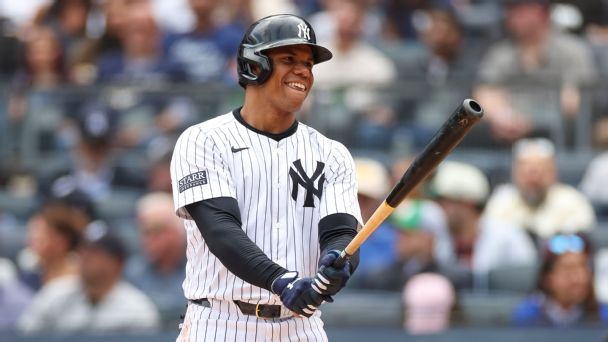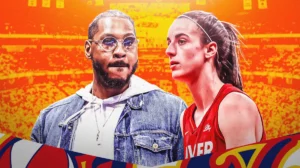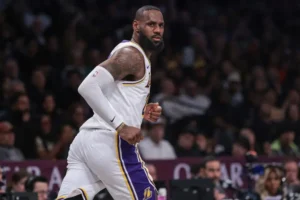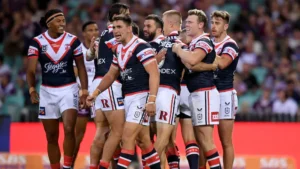The Houston Astros had little choice but to release first baseman Jose Abreu after his disastrous start to the season, but organisations are still hesitant to make the decision. Eating a large sum of money, specifically $30.8 million. Signed as a free agent prior to the 2023 season, Abreu was hitting.124 in 35 games, and the Astros gave the 37-year-old former MVP 120 plate appearances to see whether he still had anything left; he didn’t. The Astros couldn’t wait much longer, as they are six games under.500 and their offence ranks eighth in the American League in runs.
It’s a humiliating conclusion for Abreu, the 2020 American League MVP and two-time RBI champion. It’s hardly an exaggeration to say that Abreu, who was 27 when he signed with the Chicago White Sox in 2014 after defecting from Cuba, could have been a Hall of Famer if he had reached the majors earlier. He entered the Cuban professional league at the age of 16, hit.337 at 18, and was the league’s greatest hitter in his twenties.
In his first season with the White Sox, he batted.317 with 36 home runs, leading the AL in slugging percentage and adjusted OPS. He drove in 100 runs in five of his first seven seasons, missing only 2018 (34 games) and the truncated 2020 season (when he led the majors with 60 RBIs in 60 games).
We could try to fill in some of Abreu’s missing major league seasons to get an estimated lifetime WAR. In his first four seasons with the White Sox, he averaged 4.3 WAR, with a high of 5.8 in the first year. His first big offensive season in Cuba came when he was 22, therefore we may infer he performed at an exceptional level for the next five seasons. Let’s suppose he averaged 4.5 WAR during those five seasons and 2.5 WAR between the ages of 19 and 21. That’s an additional 30 WAR on top of the 30.3 he earned throughout his MLB career, for a total of 60.3, which compares favourably to several other Hall of Fame first baseman/slugger types, such Harmon Killebrew (60.3), Willie Stargell (57.3), David Ortiz (55.3), Tony Perez (53.9), and Fred McGriff (52.6).
He has 263 home runs and 960 RBIs in the major leagues. With a reasonable estimate of 200 more home runs and 700 RBIs, he’ll have an amazing career total of 463 home runs and 1660 RBIs. That is a potential Hall of Famer.
None of that takes away from how catastrophic this deal has been for the Astros. At the time of the deal, I gave it a B+, primarily because Abreu looked like a nice upgrade at first base over Yuli Gurriel, who struggled in 2022 with minus-0.2 WAR. Abreu was coming off a.304 season with the White Sox, but had only 15 home runs, which could be a hint that his game was slipping. It’s also a signing that prior general managers Jeff Luhnow and James Click would not have made. Luhnow liked to make trades for elite players, including as Justin Verlander, Gerrit Cole, and Zack Greinke, rather than sign free agents, particularly 36-year-old free agents, to three-year contracts. Owner Jim Crane made the transaction in the gap between parting ways with Click following the 2022 World Series triumph and hiring Dana Brown.
Now the Astros must pay out the remainder of Abreu’s contract. It’s the type of agreement that explains why certain organisations, as we saw this offseason, are hesitant to enter free agency, particularly for players in their 30s. So many of them backfire. Abreu’s release reminded me of five other terrible agreements from recent offseasons.

Javier Baez, Detroit Tigers
The deal: 6 years, $140 million, 2022–27.
Baez’s output decreased sharply after signing with Detroit during a free agent offseason dominated by shortstops. Basically, Baez’s poor plate discipline and lengthy swing eventually caught up with him. He hit.222 with a.267 OPS last season and had nine home runs. His defence helped him stay above replacement level, but only slightly (0.6 WAR). His bat is considerably worse in 2024, and his defence is deteriorating as well—both Statcast and defensive runs saved evaluate his defence low. Perhaps the decline in the field is due to Baez’s back ailment, which landed him on the injured list last week after he had an injection for lumbar spine inflammation.
Detroit must now answer the question: Is it worth playing Baez when he returns to health? The Tigers still owe him $73 million after this season, and fill-ins Ryan Kreidler and Zach McKinstry aren’t projected to be any better with the bat, so Baez will almost certainly get another opportunity. However, the Tigers will have to do some soul searching this offseason about their shortstop position and whether they want to stay committed to Baez.
 Andrew Benintendi, Chicago White Sox
Andrew Benintendi, Chicago White Sox
The agreement: 5 years, $75 million, 2023-27.
Benintendi joined the White Sox after batting.304 in 2022, but he had only five home runs that season. That batting average and his age (28) were advantages heading into free agency, but it still felt like a lot of money for a man who had primarily hit singles. He had an 88 OPS+ last season and has performed even worse in 2024, with a.204/.245/.296 line. His defensive run saved metrics are also poor, with minus-9 DRS, resulting in a major league-worst WAR of minus-2.0 (Abreu was at minus-1.6).
If the White Sox keep playing Benintendi and he continues to play like this, he has the potential to have the lowest WAR season ever for a position player. Since 1900, that “honour” has gone to Jerry Royster, who accumulated minus-4.1 WAR with the Braves in 1977, when he had a.566 OPS in a hitter’s park while making 28 errors across three infield positions. The Astros had to let Abreu leave because they still want to contend in the playoffs. With three years remaining on Benintendi’s deal and the team well out of the playoff picture, the White Sox will try to let Benintendi play — but it’s not looking good.
 Kris Bryant, Colorado Rockies
Kris Bryant, Colorado Rockies
The deal: 7 years, $182 million, 2022-2028.
When a Mariners fan told me he hoped Seattle would sign Bryant during his free agency summer, I informed him that he did not want Bryant. Quickly compare him to the next player on this list: While Xander Bogaerts has several red flags that make his future questionable, Bryant had them before the Rockies signed him. While Bryant had a strong 2021 (124 OPS+) with the Cubs and Giants, and his positional versatility was a huge advantage, there were apparent worries about handing him a significant contract. His hard-hit rate was below average (42nd percentile, his highest since 2017), he’d experienced knee, shoulder, back, and wrist problems with the Cubs, and he was turning 30. What might go wrong?
With the Rockies, everything we predicted has gone wrong. Bryant’s varied illnesses have resulted in seven different trips on the injured list, including missing 31 games earlier this season due to a back strain and damaging his rib cage after colliding with a wall this month. He has a.186 batting average in the 24 games he has played so far. He told the Denver Post in May, “I know [my talent] is still there.” I hope so, but considering Bryant’s age and the growing number of ailments, it may be too difficult to overcome a body that has deserted him.
Xander Bogaerts, San Diego Padres.
The deal: 11 years, $280 million, 2023–33.
Bogaerts performed admirably in the first year of his contract, putting up a.790 OPS and 4.4 WAR. That was slightly below his average output with the Red Sox, but the Padres would have been happy with that for the following seven or eight years. Instead, Bogaerts is hitting.219/.265/.316, and new manager Mike Shildt shifted Bogaerts from shortstop to second base.
Bogaerts has never had outstanding velocity, but his numbers have dipped significantly over the last two seasons, dropping to just 86.2 mph. The new bat tracking measurements suggest that he has below-average bat speed. His strikeout rate, which was previously superb, is now approaching league average. He’s probably not this bad, and the stats show he’s had some bad luck, but at only 31 years old and with nine years left on his contract after this one, the red flags are already beginning to pile up.

Anthony Rendon, Los Angeles Angels
The deal: 7 years, $245 million, 2020–2026
Rendon was 30 years old and coming off a spectacular 2019 season (7.1 WAR, third in MVP voting) that culminated in a World Series championship when the Angels offered him a massive contract, picturing a big three lineup of Mike Trout, Shohei Ohtani, and Rendon. Rendon was fine during the COVID-shortened 2020 season (150 OPS+), but he has struggled to remain healthy and bat well since then. He has played 167 games since 2021 and has a.239/.336/.356 batting line. He has only played 19 games this season and is currently on the 60-day injured list with a hamstring rupture.
The Angels will still owe Rendon $76 million for the 2025-26 season, and with only 3.6 WAR earned in the first five seasons, this could go down as one of the worst acquisitions ever. Certainly, it’s a lot of poor luck; organisations are well aware of the danger connected with pitching, which appears to affect the Angels more than other teams.
When he wasn’t hitting eight drives of 340 yards or more, he was working on his right hip between holes. He pumped fists and charmed hundreds of sunburned spectators on his route to a 3-under 67 and a three-shot lead entering the final round.
At stake is the opportunity to win a second U.S. Open title with a redesigned game, still as powerful as ever, and a physique that isn’t quite the “Incredible Bulk” he was at Winged Foot in 2020.
A last round awaits, with Rory McIlroy, Patrick Cantlay, and Matthieu Pavon trailing by three strokes and all looking capable of challenging him for the silver prize.
Bryson DeChambeau is gaining popularity among golf fans.DeChambeau, who finished second in the PGA Championship and finished in the top ten at the Masters in April, is now at 7-under 203. He is the only golfer to shoot three consecutive rounds of 60 in a US Open at Pinehurst No. 2.
Ludvig Aberg, the outstanding Swede who led the third round by one shot, made a triple bogey on the 13th hole, dropping him to 73 and leaving him five shots behind Hideki Matsuyama (70).
DeChambeau stated that “two hips that are not fantastic” from his speed training prompted him to request a trainer to be worked on in the woods after the tenth hole. He went to the 11th hole, hit a 347-yard drive, drove a wedge safely to the centre of the green, and made a putt from just outside 12 feet to become the first player to achieve 7 under all week.
On the 13th, with the tee somewhat forward, he wished loudly to hit the green, but realised it wasn’t practical and told the gallery, “Don’t boo me,” as he grabbed for iron. He missed the fairway and landed in a bunker, sending his approach dance by the cup.
He missed that 6-footer for birdie, but made birdie on the 14th and led by up to four strokes. However, he was not immune to a large number, as were so many others.
DeChambeau’s shot at the 16th drifted off the front of the green. His chip was too feeble, so he returned to his previous shot. His following pitch was just slightly better, and he missed the putt for a double bogey.
But he responded with a throwing wedge that narrowly cleared the formidable bunker on the right side of the par-3 17th and sunk a 12-foot putt.
Pavon, who won at Torrey Pines in his rookie year on the PGA Tour, joined DeChambeau as the only players to avoid a round over par this week. In his 69-hole round, he saved one par in front of a wiregrass bush and attached pins whenever possible.
McIlroy (69) and Cantlay (70), Ryder Cup competitors and PGA Tour board members, will be in the penultimate group. They stayed in various ways.
McIlroy began to soar early on the back nine thanks to some excellent putting — a 10-foot birdie on the 12th, a crucial par saving from 6 feet on the 13th, a wedge to tap-in range on the 14th, and another huge par save on the 16th.
However, he dropped two strokes on the par threes and ended himself further back than he would have liked. Still, there’s a chance. He famously declared last year, when he finished second at the U.S. Open, “I would go through 100 Sundays like this to get my hands on another major championship.”
He’s right there, offering another chance. And so is Cantlay, who put on a tremendous display of his own. Cantlay missed a number of strong birdie opportunities, but he remained in the game with five par-saving putts of 7 feet or longer.
He also made a 20-foot birdie putt on the 17th to stay in range.
Pinehurst was hot for the second day in a running, with a heat index near 100 degrees (38 Celsius) and brown splotches of grass making the No. 2 course appear fast and dangerous.
The third round began with 15 players under par, which was reduced to eight players into the final, a difficult test of the major that rewards only the cleanest golf.
Collin Morikawa produced a bogey-free round of 66, moving him from a tie for 51st to just inside the top 10.
Nobody who played early managed to make a move. The course is so demanding that it exposes anyone who isn’t on top of their game. That includes Scottie Scheffler, the top player, who had to settle for a 71. It was his fourth consecutive round over par since Sunday at the Memorial, the first time he has done so in his career.






